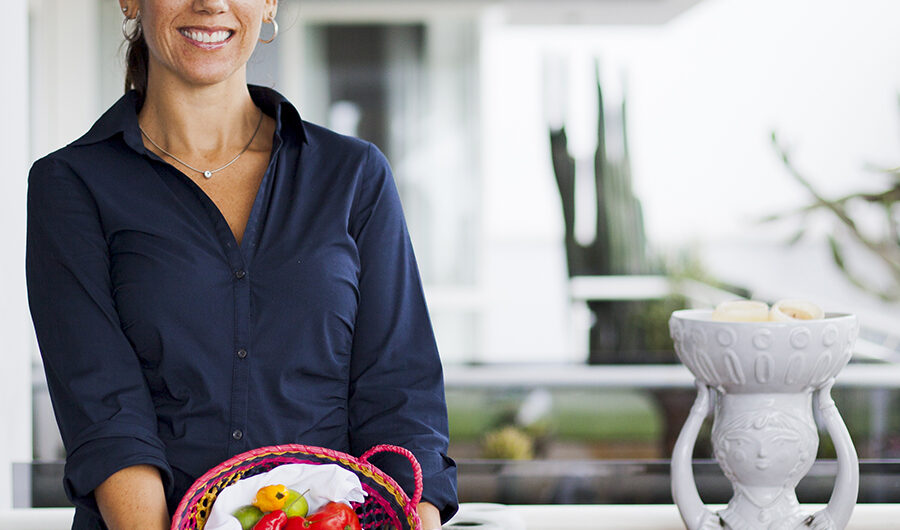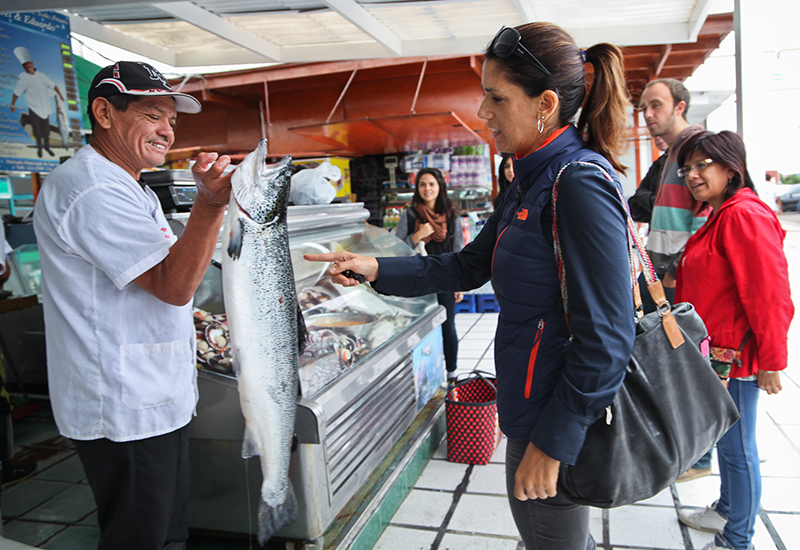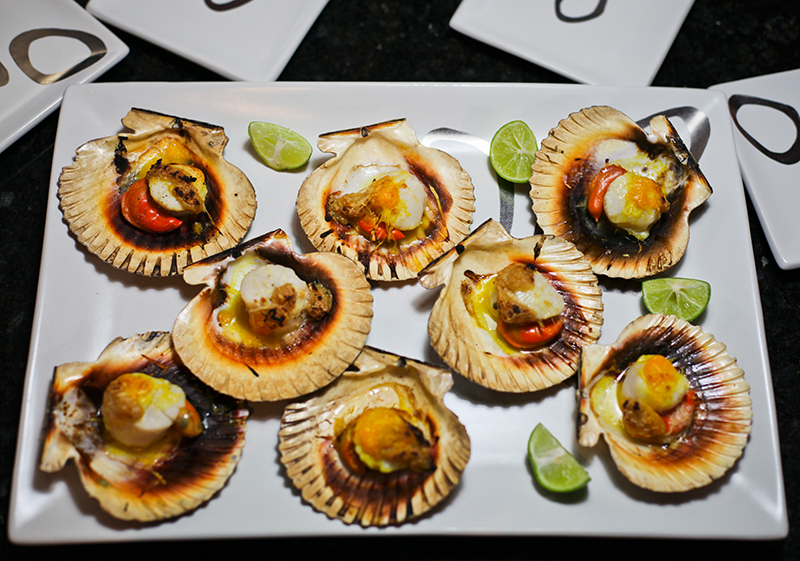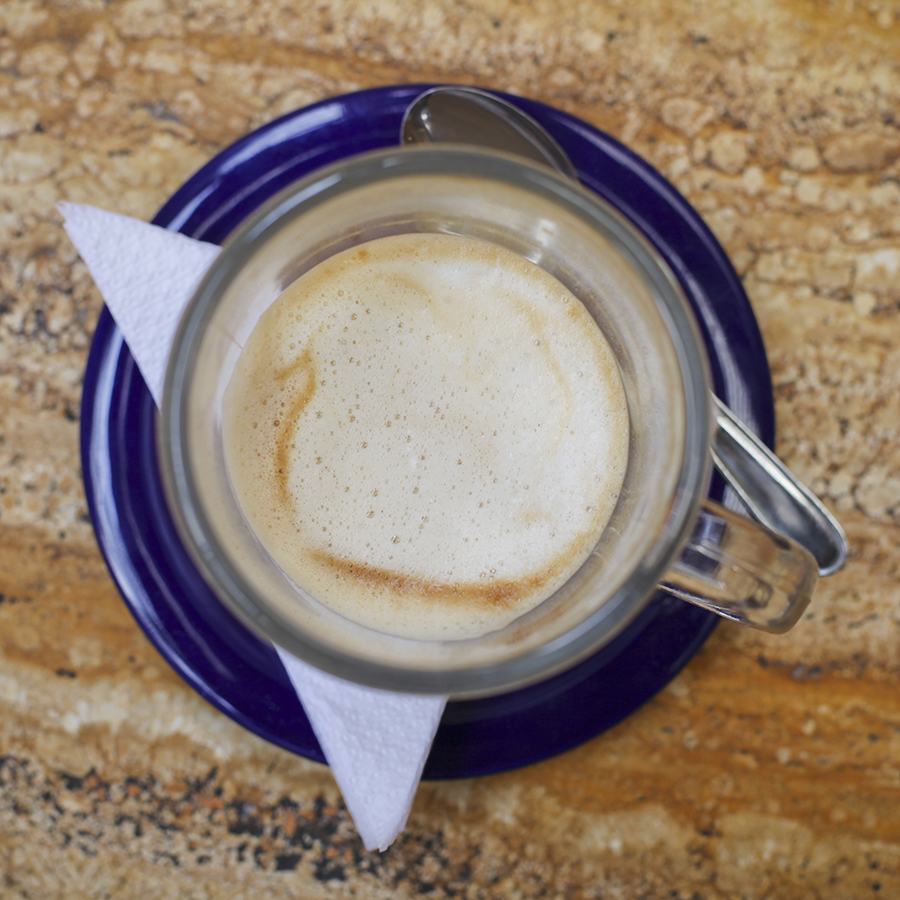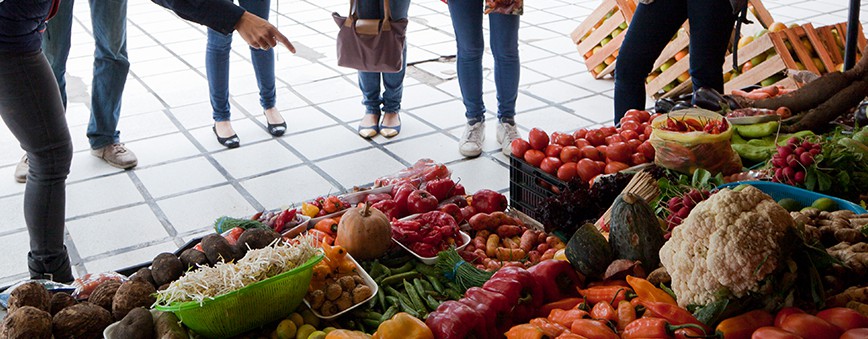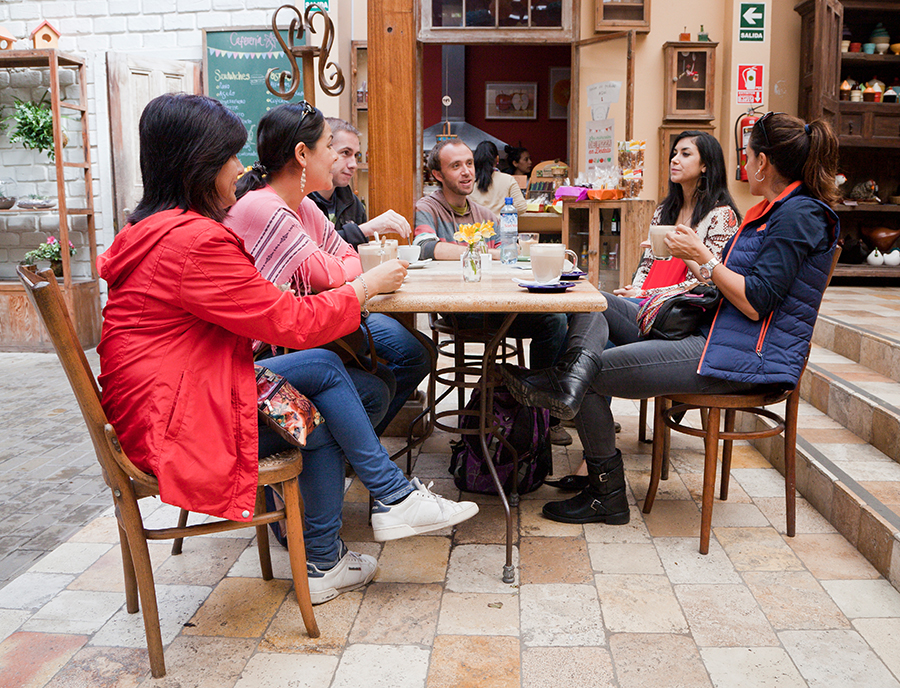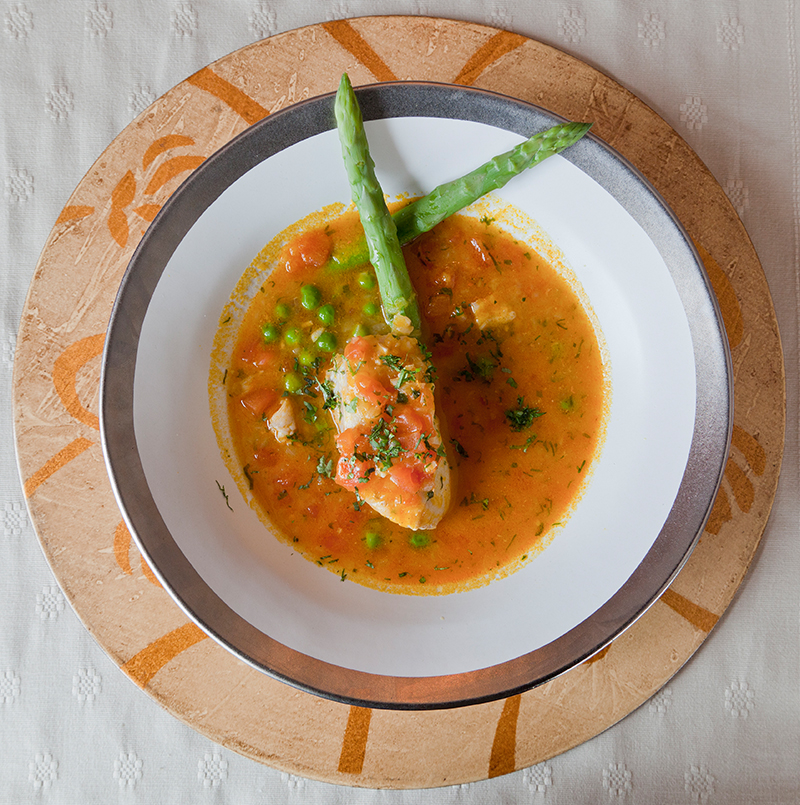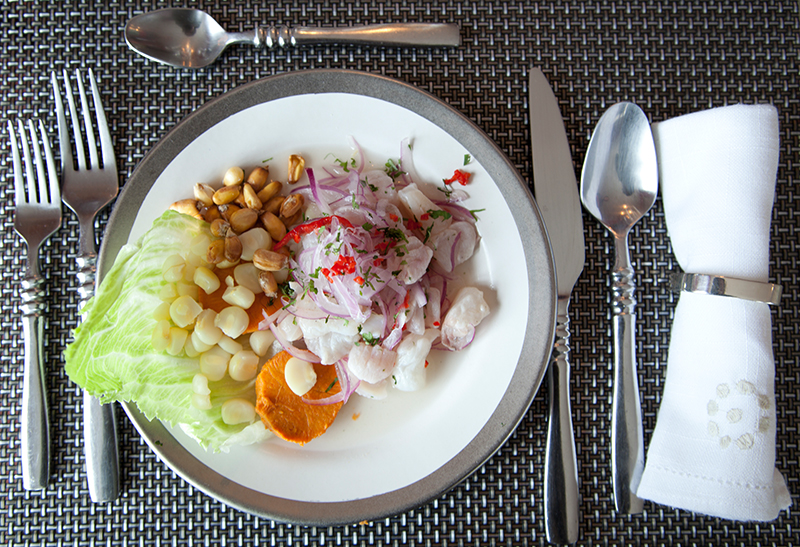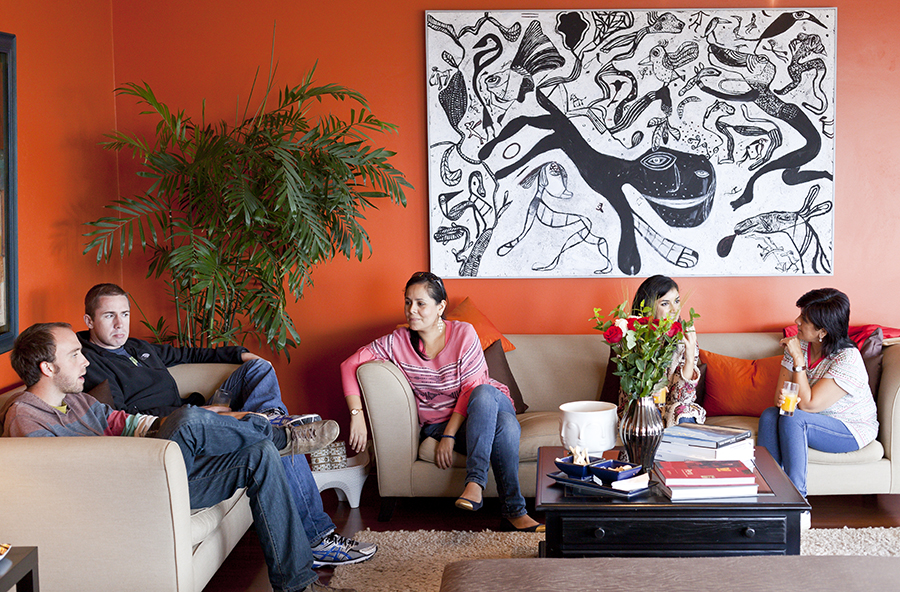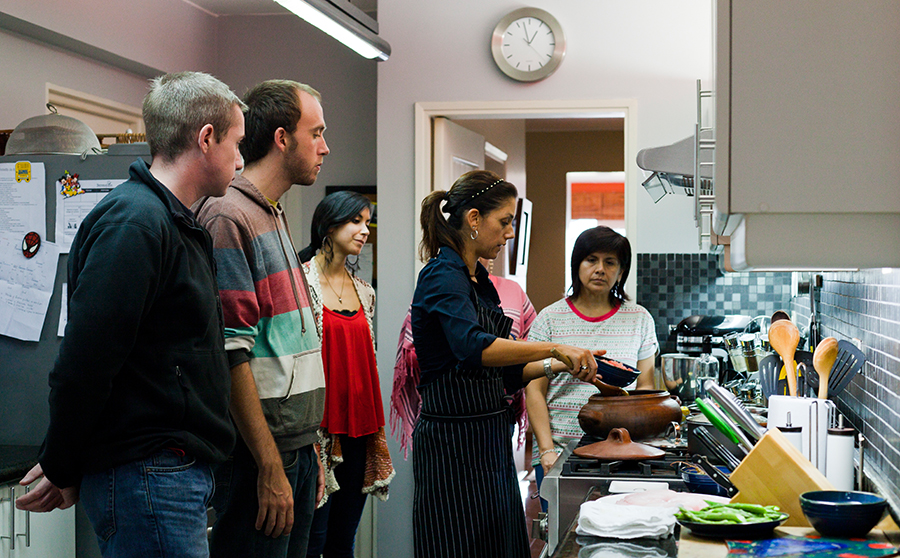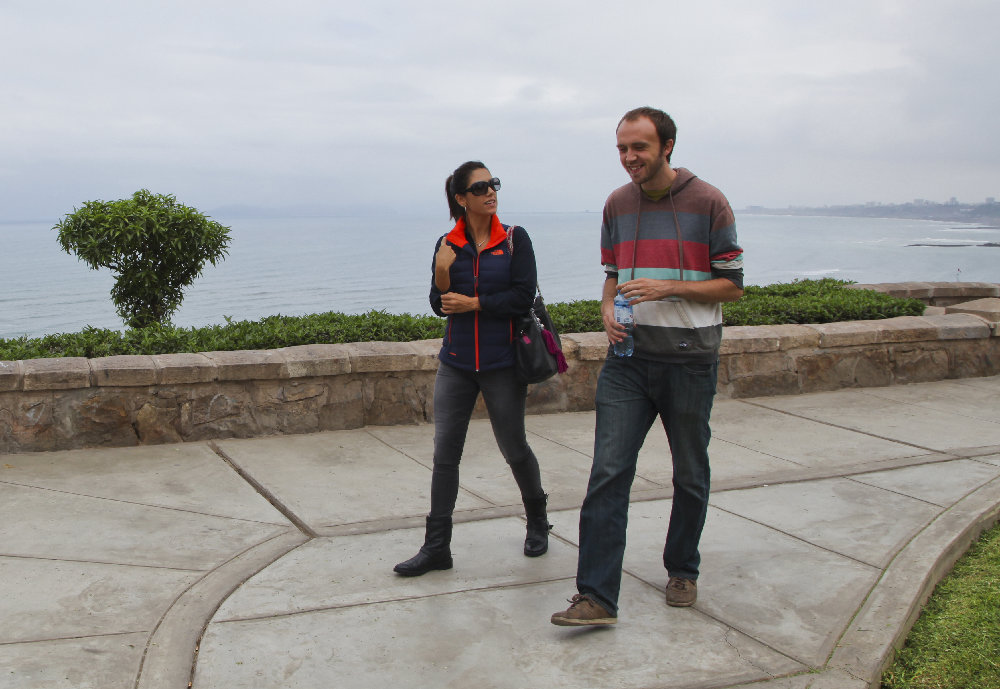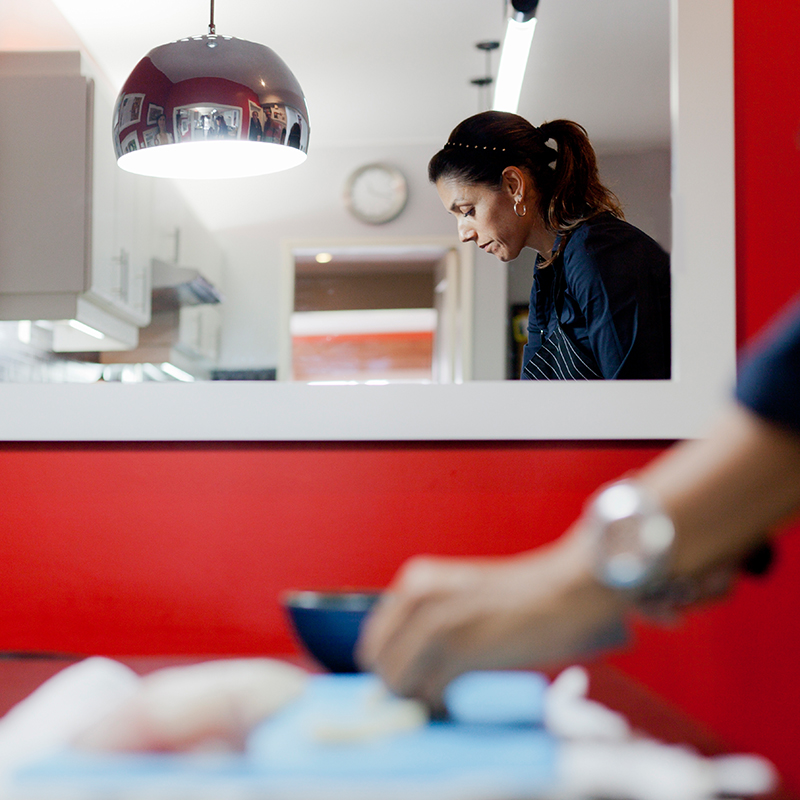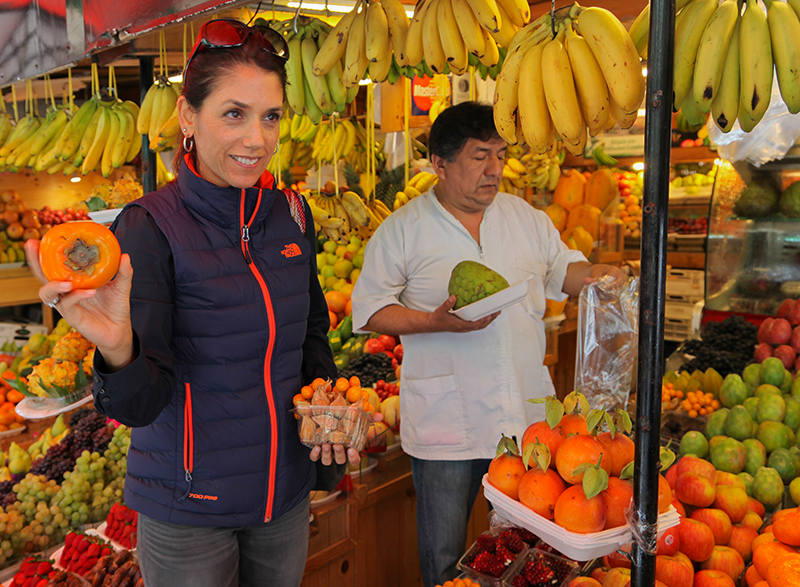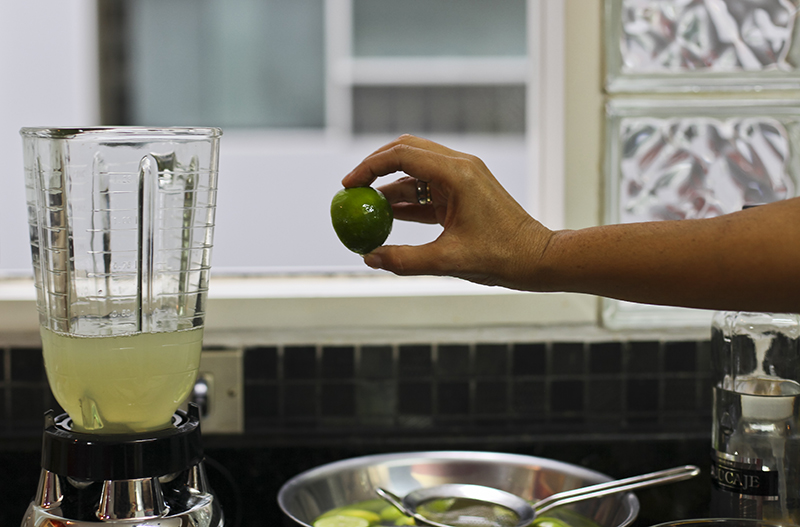The country’s capital city Lima proudly lays claim to being the ultimate food mecca in South America. In Lima you will find 4 of the World’s Top 50 restaurants. Exploring local markets, taking a Lima cooking class with an expert chef, sampling local food and dining at local eateries and world-class gourmet restaurants are unmissable experiences in Lima, with Peru’s culinary scene providing a window into the Peru’s history and culture. To get under the skin of Peru’s food scene, we arrange a hands-on Lima cooking class and complete personalised Peru culinary tour experiences with our star chef, Penelope Alzamora, one of Aracari’s many specialists.
Lima Cooking Class & Culinary Experience: Lima With Zest
Penelope Alzamora
Through our culinary experience Lima With Zest, Penelope will introduce you to all things Peruvian cuisine and tailor the experience to your interests – from being more hands-on to a more informative demonstration. Penélope grew up in Peru but received her education abroad, getting a degree in hospitality at Newbury College outside of Boston, learning culinary arts at Johnson & Wales in Rhode Island and then teaching about Peruvian cuisine at Tante Marie Cooking School in San Francisco. Additionally, she and her family opened the restaurant Bohemia Café y Más in Lima, where she worked in the kitchen for years, partnering with famous Peruvian chef, Gastón Acurio during that time.
A group from Aracari spent a morning with Penélope enjoying the Lima With Zest experience, visiting a local market to buy ingredients for a lunch we’d prepare at the chef’s home in the seaside neighborhood of Barranco. Here we share our culinary tour Peru experience!
Peru With Flavor: At the Market
The day of our culinary tour Peru experience with Penelope I entered a bright, white-walled market in the San Isidro district and found the Aracari group gathered in an open space at the center of the stalls. At almost the same time that I arrived, a tall, slender woman with a straw bag dangling from her arm entered the market and began greeting familiar faces in the group and introduced herself to me as Penélope.
She took us first to the fish stall, where she knew the staff. They showed us different types of fish—grouper, sea bass, flounder— all freshly caught that morning, along with seafood, like prawns, giant clams and lush scallops. Then we browsed the stall of nuts, dried fruits and snacks like yucca chips, bolas de kiwicha (balls of popped amaranth with honey) and cancha (fried corn kernels).
Across from this stall was the medicine man, who Penelope greeted by name as he offered to watch her straw bag (as is his habit). She showed us various herbs and medicinal plants like crushed achiote leaves and the mix of herbs used in the traditional Peruvian emoliente drink, a staple in the chef’s home.
And at last, we found our way to the fruit and vegetable stalls, where we would point at exotic looking fruits and ask the name and origin, many from the jungle or the sierra, like aguaje, tuna, aguaymanto, camu camu and lúcuma (click here for a guide to Peruvian fruit). There were endless colors, shapes and varieties of fruits, like the tart maracuyá (passion fruit), deep pink pomegranates and green, heart-shaped chirimoyas (known as custard apples) as large as a softball. Penelope bought cilantro, choclo (large kennel corn), sweet potatoes, onion and yellow and red ajíes (chili peppers). When we finished with our purchases, we went to her car, and she drove us from the market to her home.
A Coffee Break in Bohemian Barranco
It was still a bit early to start cooking lunch when we arrived at Penélope’s home in Barranco, so we took a walk on the esplanade along the coast to Dédalo, a local gallery and handicrafts boutique with a nice patio and café. We sat down to a cappuccino and talked about Lima, her time abroad and mostly her experiences with travellers doing the culinary tour. She explained that she really enjoys learning about so many people and cultures as she bonds with her guests. She mentioned families that came and loved that the experience was so hands-on and kept them involved. Penélope’s positive energy and warmth are genuine, which made sitting down with her to chat at the café a lovely addition to the experience.
Before leaving, Penélope showed us the ceramics from a line called Jallpa Nina, produced in a studio owned by her parents in the area of southern Lima called Lurín. The ceramics were elegant, simply designed and expertly crafted with a timelessness that made them as functional as decorative. For visitors who are interested in ceramics, the culinary experience with Penelope could be extended to a full day in which they visit the Jallpa Nina studio and prepare the meal there.
In the Kitchen: Lima Cooking Class
After our coffee we went to the Penélope’s home, entering an apartment that was tastefully decorated with Peruvian ceramics and art in the living room to complement the spectacular view of the Pacific Ocean. We were offered a fresh maracuyá juice and some of the yucca snacks we’d purchased at the market. Once the kitchen was ready, we all entered and gathered around a table, where the ingredients for the three dishes we’d be preparing were set out for us by the two kitchen assistants, who work with the chef at her home. Penelope tailors the Lima cooking class to be a demo or slightly more hands on.
First we made an appetizer, conchitas a la parmesana (parmesan scallops). She laid out a tray of beautiful scallops on the half shell, explaining how visitors from the United States often thought that shells were decorative, surprised that they actually came out of the sea that way. She showed us the different ingredients and the steps to prepare the scallops, starting with a few drops of lime juice, a pinch of salt, a dollop of roasted garlic paste, butter, yellow ají pepper paste, a drop or two of pisco and finally, the grated fresh parmesan cheese. We all took turns adorning the scallops, which were then broiled for a few minutes while we turned to the next part of the meal: the pisco sour.
We tasted a few types of Pisco—a mosto verde, reserved for drinking straight, and a quebranta, which is the type often used in the pisco sour. We learned how to choose good limes with a firm skin and a soft center with a strong citrus scent. She squeezes her limes by hand to avoid the overpowering rind that can make the juice more tart. With ice, lime juice, pisco, simple sugar and an egg white all placed in a blender, she mixed the pisco sours and served us each a portion to enjoy with our conchitas a la parmesana that were still hot from the oven.
Next, our chef appeared with a cutting board, sharp knife and the white flounder we had bought at the market, which she began to cut into narrow strips for the ceviche. As we were still relishing the taste of the delicious pisco sour and the broiled scallops on our taste buds, we listened to our chef explain that the cut of the fish is important for ceviche while she showed us the rectangular strips, almost perfectly equal in size, that she was slicing. Another important detail was that the fish remain cold, so she added ice cubes as she stirred in the lime juice, which should just cover the fish. We watched it turn from light pink to a white color. Then she added the finely sliced onion, the cilantro, the red ají pepper, salt and white pepper. Plates were set out for the ceviche, already garnished with the lettuce leaf, sweet potato and cooked choclo kernels.
We turned to a clay pot on the stove that smelled delicious. Our second dish was a sudado de pescado y mariscos, or a stew of grouper and crawfish. The grouper fillets were sautéed and cooked in a yellow ají sauce before being added to the simmering broth made with mussel stock, sautéed vegetables, white wine and bay leaf. Penélope added diced tomatoes and cilantro and spices as we watched, our mouths watering. Then, she took the stew off heat and covered it, inviting us to the dining room to eat.
Dining on our creations
The dining room table was set for us already, and we all sat down before lovely ceramic dishes from Jallpa Nina to feast on the results of our Lima cooking class. Our lunch was accompanied by Intipalka wine, a line produced by the Queirolo Vineyards in southern Peru, and we enjoyed our delicious meal together, beginning with the fresh ceviche and followed by the sudado.
Our lunch was completed by a homemade suspiro de limeña, a traditional dessert made with dulce de leche topped with meringue. It was arguably the best I had tasted in Lima, especially because the sweetness was softened by the pieces of chirimoya fruit that had been added.
Our experience with Penélope came to a close, and we all left her beautiful apartment more than satisfied by the charming morning we’d spent with the charismatic chef, gaining first-hand knowledge about Peruvian cooking and even a copy of the recipes.
Culinary Tour Peru
Contact us to start planning a tailormade trip to Peru including a Lima With Zest culinary tour Peru with Penelope.
For more itinerary inspiration check out our 10 day food-focused journey to Lima, Cusco and Machu Picchu, Peru with Flavor.
**All photos by Pedro Chincoa.

